|
|
Post by Anders on Jan 30, 2013 18:32:17 GMT
No, wait. Hear me out.
So, hype aside, we can all agree a high-end traditionally made katana is basically a work of art, yes? But we should also be able to agree that the same applies to an expertly crafted pattern-welded viking sword. I was watching those Serpent in the Blade videos at the Medieval section and was amazed how much work goes into one of those today, with modern equipment, let alone 1200 years ago.
So, what I would like to ask is: Assuming neither is made with modern day resources, and both have all the bells and whistles of a really fancy sword as defined by their respective cultures, which is more impressive, a masterwork katana or a masterwork viking sword?
I'm not asking which you consider to be the better sword or which one you think is the most attractive. I mean, purely in terms of craftsmanship, which do you think requires the most skill to create?
|
|
|
|
Post by Springs on Jan 30, 2013 20:35:00 GMT
I'm of the opinion that katana tend to be viewed more of an art item then a viking sword, mainly because of the culture surrounding it. Not that the viking culture didn't view their swords as works of art, but I think the culture surrounding it tend to see it as more of a tool, than an art piece.
Which requires more skill to create though? I think a katana, mainly because of the many steps they go through, especially their fancy art polishes. But that's only for art pieces, not so much for just a basic workhorse sword.
|
|
|
|
Post by DavidW on Jan 30, 2013 20:49:58 GMT
I also think the katana, because even after the blade has been forged, folded, sharpened, and polished, the craftsman still has to create a perfectly shaped tsuka and saya. Afterwards, he has to hand-wrap the ito, of which there are varied methods, some being complicated (he also has to make sure the ito is alternating when wrapping it). The kurigata and koiguchi of the saya are a bit of extra work and skill, and the tsuba can also be a work of art in itself, requiring skill to produce. Then the habaki must fit properly and be perfectly aligned, as well as the seppa. There are many separate parts of a katana, and a lot of skill is required to make them and make sure they fit the katana perfectly and securely.
I don't know much about a viking sword though.
|
|
|
|
Post by wnydel on Jan 30, 2013 20:50:46 GMT
Based on this alone
"which do you think requires the most skill to create?"
I would say the katana. I think that both are works of art and beauty is in the eyes of the beholder. So peoples preferences are going to sway their opinion. But in terms of the amount of labor time and I assume skill, I have to go with the katana.
|
|
Lunaman
Senior Forumite
Posts: 3,974
|
Post by Lunaman on Jan 30, 2013 21:12:33 GMT
Part of the problem of a question like this is assuming the people who reply will have an equal familiarity with the high-end craft examples of both types of swords. See above replies, with reasons such as "viking blades weren't seen as art" or "The many steps they go through (to make a katana)" or "There are many separate parts of a katana" or "I don't know much about a viking sword, though." "I assume there's more labor time in a katana." Please.    When you take into account pattern welding and multi-part pommels and hilts and inlays, and the more complex shaping of a double-edge sword vs a single edge sword before heat treatment, then the two types are probably quite comparable in terms of skill required to create, PROVIDED WE ARE EXAMINING SIMILAR LEVELS OF EMBELLISHMENT. It is the final fit and finish of a sword that always demands the most time and skill out of the entire process. If you are going into this assuming a simple example of one type and an elaborate example of the other type, you are going to have a very very biased response, with poor reasoning. Also, the categories themselves are incredibly broad. Are we discussing Edo-period peacetime katana fittings with guady and elaborate hand-carvings in shakudo, or wartime swords with simple wraps and plain iron tsubas? The sword of a viking king or a plain blade for a man-at-arms with more norman design elements? Meh. I've seen authentic examples of both sword types that left me slack-jawed and gasping, so I don't think I'll be leaving favor to one or the other. 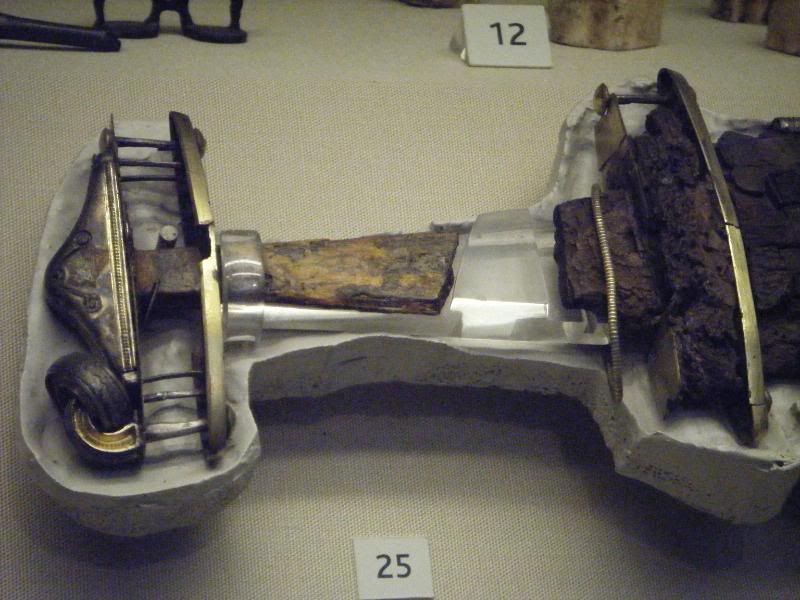 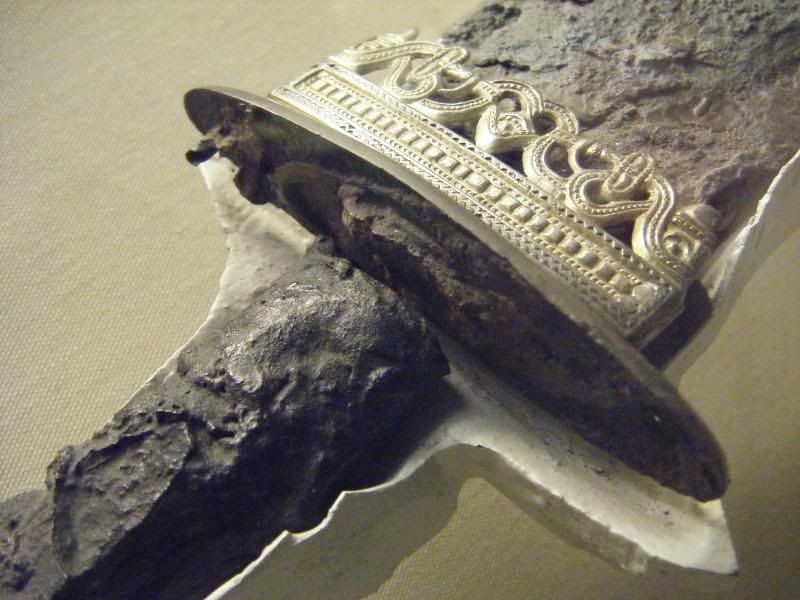 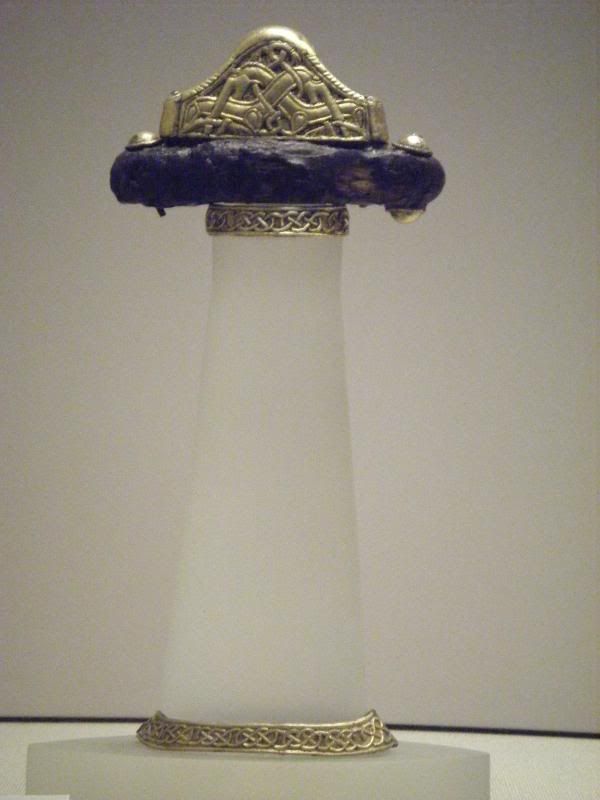 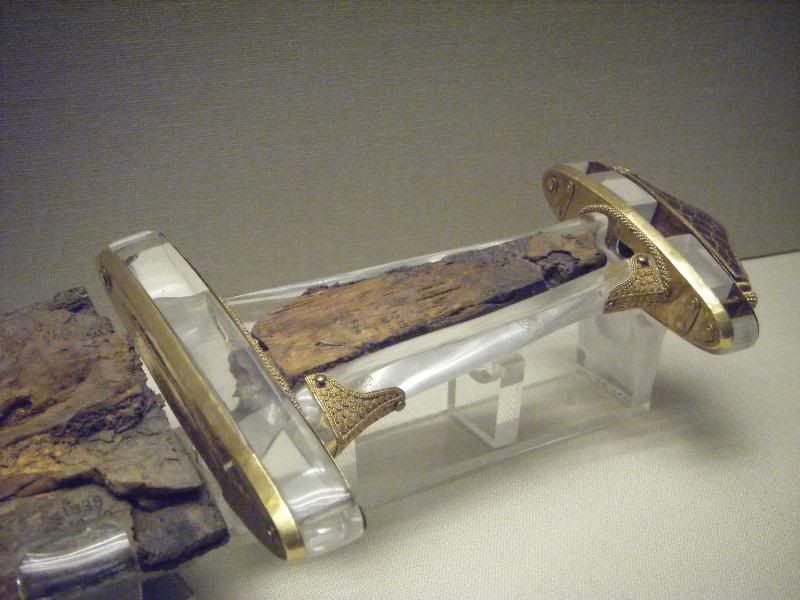 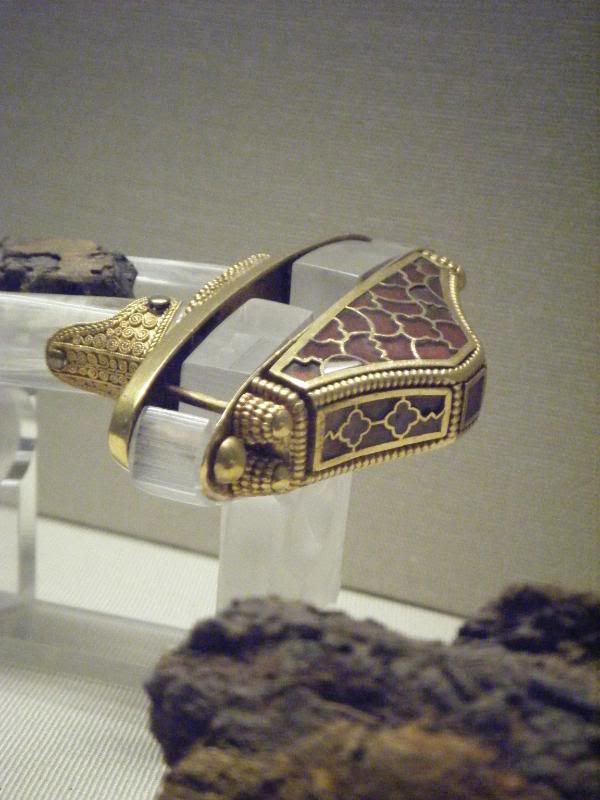 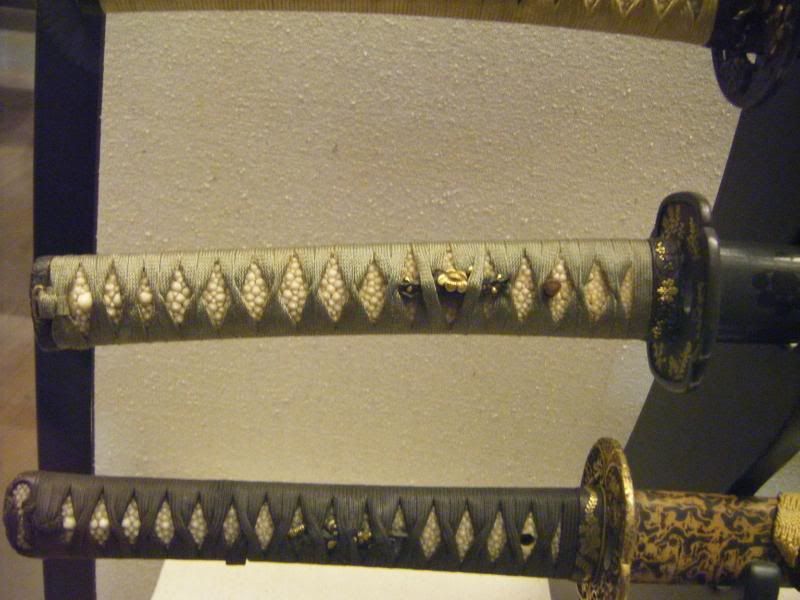 |
|
|
|
Post by wnydel on Jan 30, 2013 22:10:28 GMT
Great points Lunaman. Honestly I was going to originlly post something similar myself, but then I thought that my position might be biased based on my sword perferences. I also remembered that Rick Barrett recently stopped making katanas due to the demands of it and is still going to be making western style swords, hence my assumption that katanas are more difficult. Definitely not better IMO, but again that is my preference showing through.
BTW, those pics of Barta's swords always make be wish I would win the lottery so I could buy them all
|
|
|
|
Post by kingrikoraru on Jan 31, 2013 0:49:55 GMT
No I think the difference here is more or less the culture, myths, and assumption surrounding the weapon smith. It is a fact that a master at anything in Japan is held in such high regard, and the training to become one is so long and, one can only assume, hard that in the end, anything that master produce is consider a mastercraft items. So really, it's the time they put into purely learning the art and crafting a weapon. Now I know that becoming a master at making any melee weapons will take time, but the fact is that because of the Japanese culture and its influence, it will seem that a katana made from a master smith (One of those that go for sooooooo much money) will be seen as being more exquisite, requiring more skills.
So in the end, while both the masterful viking sword and the katana can be beautifully created and decorated, the Japanese culture and myths behind the smith will make the katana seem like it will take more skills to create. I'm not trying to say that a viking sword smith or any European sword smith can easily master their art, but the Japanese emphasis on mastering their arts brings the katana up in an air of hype. (look at Albion for example. They make some unbelievably beautiful sword. A katana comparable to an Albion in term of skills created by a master Japanese smiths could be sold for so much more, just because it is a katana created by a master Japanese smith)
|
|
|
|
Post by junon on Jan 31, 2013 3:00:56 GMT
Let me try to be different and vote for Viking...  remember there is a big time difference between the two cultures... Viking was in mid-10 century while katana that we know now is newer invention (16th century)... Both of them are beautiful and artistic, of course... however in my opinion swordsmith of the old viking age skills is somewhat better than comparable japanese sword smith within the same era (10 centurish japanese)... This is like comparing antique vs reproduction sword... Swordsmith in old age probably has more skill in a sense that they have to know a lot of thing without help of modern technology behind them (heat treatment, blade geometry, etc)... Doesn't mean the repro is lower quality, but it's somehow easier to make a repro now since we have a lot of modern tool to help (computer, CNC, metalurgy knowledge, etc). |
|
SanMarc
Senior Forumite
Posts: 3,193
|
Post by SanMarc on Jan 31, 2013 3:23:10 GMT
Ok, stop comparing custom forged with production, (Albion V Art Katana) between the two there is no winner or loser, it takes just as long to make a pattern welded Viking Blade as it does to out fit it, IE. hilt/pommel and so forth, read H.R. Ellis Davidson's "The Sword In Anglo Saxon England" Tells you Exactly how many Hours for forging and outfitting. 2500 Hr's for the compleat sword and fittings!!!! The Making of a Edo period Art Katana is about the same...... So there!!! SanMarc......  |
|
|
|
Post by kingrikoraru on Jan 31, 2013 3:31:41 GMT
You can't really compare the skill level of a Viking sword smith to that of a Japanese sword smith in the same era, especially because that the thread is based on comparing the katana to the Viking-aged sword, which could not be possible if the Katana has yet to be invented. It would be better to assume that the Viking continues into the same era as the Japanese katana-age and base it on that.
Let's not to mention that during the time of its invention, the katana was a whole new concept while the double edged sword of Europe has been evolving since Greece and Roman times, and that both culture has no help from modern technology. (It could be said that because Europe weapons has been evolving, their understand of their weapons could be better than the knowledge of the katana when it is first invented) So your point that this is like comparing an antique to a repro sword is not exactly accurate. (Also to my knowledge, the katana age starts at around the 14th century and the Viking age reaches its peak at around the 12th century, so the difference between their time is not much and considering that Japan is much more isolated, their advancement in weaponry are not too far ahead of the Vikings)
But with modern day resources, the skills needed to create the best of both would be around the same. However, the price between the two could be a huge difference.
|
|
|
|
Post by etiennehamel on Jan 31, 2013 4:19:25 GMT
the thing is, we could compare the two but we would have to go for a koto tachi if we wanted to bearound the same time. personally i couldn't choose between the two since both are very advanced for their time and about the look of the sword, both can be very pretty because THERE WAS ceremony swords in both cultures and when we think about beauty and details you will usually see them there. thats it for me, my answer would be a tie.
|
|
|
|
Post by Anders on Jan 31, 2013 4:29:30 GMT
I don't think it's fair to compare Albion to a traditional Japanese master smith. They make good swords, but they are still machine-made production swords where the focus is mostly on performance. Really, Patrick Bárta was pretty much the guy I was thinking about for the viking side of this. It wasn't really, though. I mean there's the whole story about Amakuni but I'm pretty sure that's just a legend. The katana actually evolved from the uchigatana which evolved from the tachi which evolved from early imported Chinese swords, probably. Then there's stuff like the Mongol invasion forcing new innovations and changes in tradition, etc. So Japanese swords got plenty of evolution as well. Nobody actually "invented" the katana from scratch. |
|
|
|
Post by kingrikoraru on Jan 31, 2013 5:21:06 GMT
I don't really know a lot of High end custom Viking sword maker so I used Albion as a generic example but just from looking at high end nihonto, and correct me if I'm wrong, I don't think think many swords can come up to that price range
And for what it's worth, I know the katana did evolve from a line of different bladed weapon but when it did become the standard of arms for samurai, it is, in my opinion, an innovation for its time. I think myths about the invention of the katana wouldn't exist if it's not something completely different from swords before.
|
|
|
|
Post by Vue on Jan 31, 2013 5:32:56 GMT
Regarding Patrick Barta, the man does some amazing work but correct if I'm wrong but does he use modern materials & techniques? or traditional materials & techniques? I've had a hard time researching traditional Viking materials&techniques when it comes to sword making, any guide will be much appreciated. Just saw this great Documentary on the Vikings by Neil Oliver, for those who haven't seen it yet here's a link - www.bbc.co.uk/programmes/b01ms4sh/episodes/guide |
|
|
|
Post by Jussi Ekholm on Jan 31, 2013 8:30:08 GMT
I have to say both are equally great. I'm mainly a nihonto collector, but viking swords are my favorite western swords. So I really can't decide between these two at personal level. I have huge respect for everyone making swords, and great swords have been made throughout earth in all times since the sword was evolved. In both cultures to my understanding some swords have been heirlooms to several generations. Which shows the great respect both cultures had regarding swords. Swordsmiths and swords of varying quality can of course be seen in both cultures. And creating a pattern welded viking sword is a very complex process, equally complicated than creating traditionally made Japanese sword. Here are couple of pictures to those that are not familiar about pattern welding in swords (sorry about the poor image quality).   And no vikings were not the first to use combining several rods & elements, this was already done by their predecessors during Migration era and Celts. True pattern welding becomes evident in the 3rd century. Late pattern welding was more than likely just decorative aspect. While in the beginning it served an useful advancement. How long it took to make a Japanese sword? I have brief chapter on one of my books (which is compiled from older Japanese works) regarding the cost of tachi in Nara period (710-794), while this is unfortunately bit before actual viking age, it can still give some comparison to migration/viking age. (I'm offering the probable outcome, as translation regards as men it took) From Engishiki XVII., Takumi chapter For good workers one tachi required 33 days, 18 from ironworkers, 9 from silversmiths, 2 from leather workers, 6 from lacquerers and 8 from ordinary laboureres. Of ordinary and middleclass smiths it took 31 from regular workers and 9,5 from ordinary labourers. If poor workers 57,5 were required. Vol. XXXIV. Woodwork department, gold mounted tachi took Famous workers 23 days, middle-class 26, low-class28. Torizukuri no tachi took high-class 20, middle-class 23, lower-class 26. Five inches Tosu (I have no idea what this is, but some small smithable object:)) Good workman can make 4 in a day, middle class worker 3 and poor only 2. Vol. XLIX. Tachi used for Oharai two seasons, eight swords, two gold mounted and six Torikubi. I suppose it took 250 worker days to complete this order. 26 days for each kinzukuri and 23 for each Torikubi - which indicates that middle-class workers filled this order of 8 swords. (although the combined days are just 190, so there must be some holidays, or time that another worker cannot yet start his work as other is still working on it). It's noted in explanation that total duration of the work varies, and length of the day during seasons is one important factor. And that tachi were finished up to c. current fine nagura stone, as that was the practice in the old days. Fine polishing is much later thing. At the time of Yutoku Tokugawa Yoshimune 1677-1751 summoned many swordsmiths to the palace and ordered them to make a sword each. It required more than twenty days to finish a sword down to ara togi. This is related by Tsunahiro Rojin. It is said that they began to work at yotsudoki (10.00) and finished at yatsudoki (14.00), and that is in agreement with the Engishiki timetable. So it according to The Sword and Same, it might have taken approximately from 80 to 240 hours (if assuming that 4 hour work schedule yotsudoki-yatsudoki) to make a one sword back in ancient Japan. Of course there have been highly ornamental ones which must have taken more time to complete. And I believe that these times start from making tamahagane and ending in finished product. For example I've read an estimate that Tsuna Sukehiro (1636-1682) made around 1600 swords during his career, Fujishiro lists that he died at the age of 46. So that was about 4-5 swords per every month during his swordsmith career depending how old he started. He received title Echizen no Kami at the age of 20 or 21. And he was popular smith, so most likely his swords were of good quality. We are talking about bare blades here, just so nobody mistakes them as fully mounted swords. Now I might approach with caution of that estimate that Anglo-Saxon sword took 2500 hours, as even with working 8 hours a day on a single sword and it's fittings, it would have taken 313 days, so almost a year. Which is not very feasible. Of course highly ornamental swords take more time to complete than plain ones. Here is one great example Sutton Hoo sword by Patrick Barta, which according to review took Patrick 600 hours to make: www.myarmoury.com/review_tmpl_suthoo.htmlOne important factor in both European and Japanese swords in period is demand. During periods of war and conflicts swordsmiths probably churned out pretty hefty number of swords monthly. When during periods of peace that number was lower. And finally the price vs. price comparison. Well authentic viking swords are pretty expensive, as are older period nihonto. As if comparison is made, it should be made with closest possible thing, even though I generally dislike comparing antique swords/types.  Like I said in the beginning, I equally appreciate both sword types. PS. I cannot comment on Patrick Barta with full knowledge, but I believe he can use both. For a very accurate reproduction like the Sutton Hoo above as traditional as possible, and for some of his more affordable works some shortcuts. At least Finnish archeologist Mikko Moilanen has made many viking period swords which include iron inlay blade inscriptions using only traditional methods by means of experimental archeology. I'm hoping to get in touch with him someday and get a glimpse of his knowledge in the field. Ian Peirces book Swords of the Viking Age has some information about traditional techniques. Likewise Oakeshott's Archeology of Weapons. Other than those most of my resources are in Finnish and few in number. But I'm aware of couple German texts and many Norwegian ones, unfortunately I haven't been able to see those. |
|
|
|
Post by Jussi Ekholm on Mar 4, 2013 10:00:03 GMT
I just received my copy of The Sword in Anglo-Saxon England, and I must say it's an excellent buy if you are intrested in swords of this time period. I've only quickly eyed various parts of it, but it's a gold mine of information, and I can't wait to read more of it.
John Anstee creates a single-handed pattern-welded sword, and there is a lot of information about smithing side of it which I do not yet fully understand. However the full sword took him about 75 hours, 43 hours to blade and rest for hilt and belt. There is also a thought that experienced smith with assistants (John Anstee made this alone) back in the day could have made it faster, but there is a mention if the iron was case-hardened more time would be needed, which may equalize the experience and assitants to more at level with this test.
But if you think that this single example of pattern-welded sword, created from scratch to fully fitted sword, by trying to replicate traditional methods closely took 75 hours. Of course the actual work back in the day might have taken much different time, due all factors involved, or it might have been very close to this.
Then you have the calculations I made for the previous post, that Japanese sword took maybe c. 80-160 hours to make back in the day. That 240 hours in the last post is the largest calculation I got, poor workers and difficult work. Of course my calculations might be totally wrong.
But I strongly believe that katana and viking sword both took similar time to make, and both took similar skill from the smith.
|
|
|
|
Post by aussie-rabbit on Mar 4, 2013 11:49:29 GMT
 Jeff Helmes would be a good person to ask - |
|
|
|
Post by Vue on Mar 5, 2013 2:08:58 GMT
|
|

